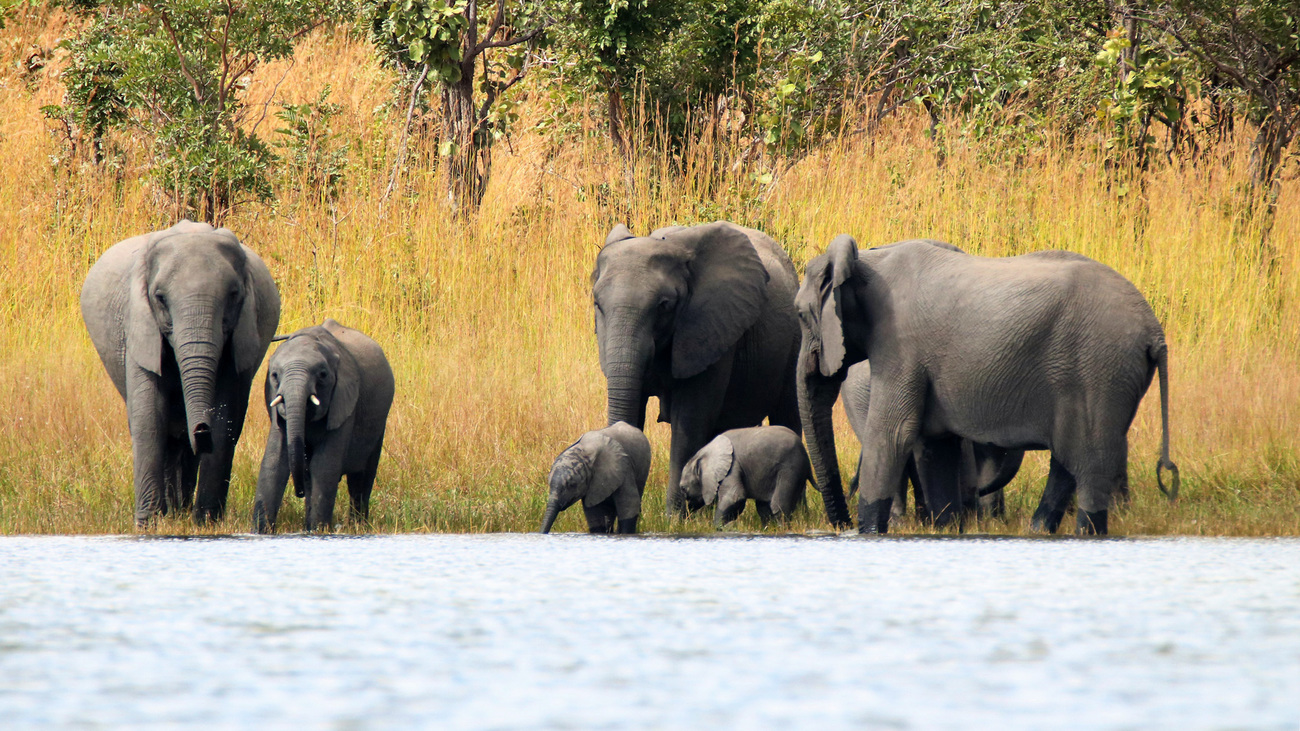Protecting the Malawi-Zambia Landscape
Habitats cross borders—so do poachersHow beehives help communities coexist with elephants in Malawi
How beehives help communities coexist with elephants in Malawi

Beehives can be a sustainable and effective way to reduce conflict in areas where communities and elephants coexist.
In Kasungu National Park in Malawi, the elephant population has increased from 40 individuals in 2014 to nearly 400 following the success of IFAW’s wildlife conservation efforts in the park, including our 2022 translocation of 263 elephants. But our intervention efforts go beyond wildlife conservation—we want to ensure communities are equipped with sustainable solutions to reduce human-wildlife conflict and promote coexistence.
Why beehives?
The beehive fence concept is simple: Beehives are suspended on poles around the periphery of a community, forming a protective barrier that elephants are hesitant to cross due to their natural fear of bees.
In Malawi, beehives will be installed on portions of Kasungu’s nearly 100-kilometre boundary fence that is currently under construction, with 70 kilometres completed so far and another 20 kilometres due to be completed by the end of 2023. The beehives along with the fence will serve as a double barrier for elephants.
Not only can hives prevent human-elephant interactions along the eastern boundary of Kasungu, but they will also provide an alternative income source to local communities living in the buffer zone. The construction of the fence has already provided employment to 150 community members, and the beehives will give households the opportunity to sell honey for extra income.
Creating room for coexistence
“An increase in healthy elephant populations is positive for Kasungu, which suffered rampant poaching for bushmeat and ivory in the past,” explains Patricio Ndadzela, IFAW’s country director for Malawi and Zambia. “But as elephants and people live alongside one another and share these natural resources, an increase in conflicts is also likely.”
He adds, “Competition for food, water, and space can easily cause conflict and reduce local acceptance of wildlife.” Based on IFAW’s experience, helping reduce the cost of living alongside wildlife means the communities we work with will not only be safer but also more likely to support and participate in conservation initiatives and reject retaliatory killing or persecution of wild animals.
By establishing a buffer zone with beehives, alongside other interventions, it may be possible to reduce human-elephant conflict incidences by more than 85%, Ndadzela says.
A way forward for elephants
“In decades of work on the ground, we understand that communities often need support that is not typically considered part of conservation, but which will either generate support for conservation measures or reduce pressure on natural resources by delivering benefits tied to conservation outcomes,” Ndadzela says.
Supporting the stability and resilience of elephant populations in Kasungu is part of IFAW’s Room to Roam vision in Africa to create safe spaces for elephants and other wildlife, stop poaching, empower communities, and rescue and rewild. Achieving these goals involves restoring connectivity between landscapes and minimising costly, unsustainable human activities that interfere with natural elephant movement and behaviour.
The result will be greater biodiversity, a natural resilience to climate change, and a future where animals and human communities can coexist and thrive.
Related content
Our work can’t get done without you. Please give what you can to help animals thrive.